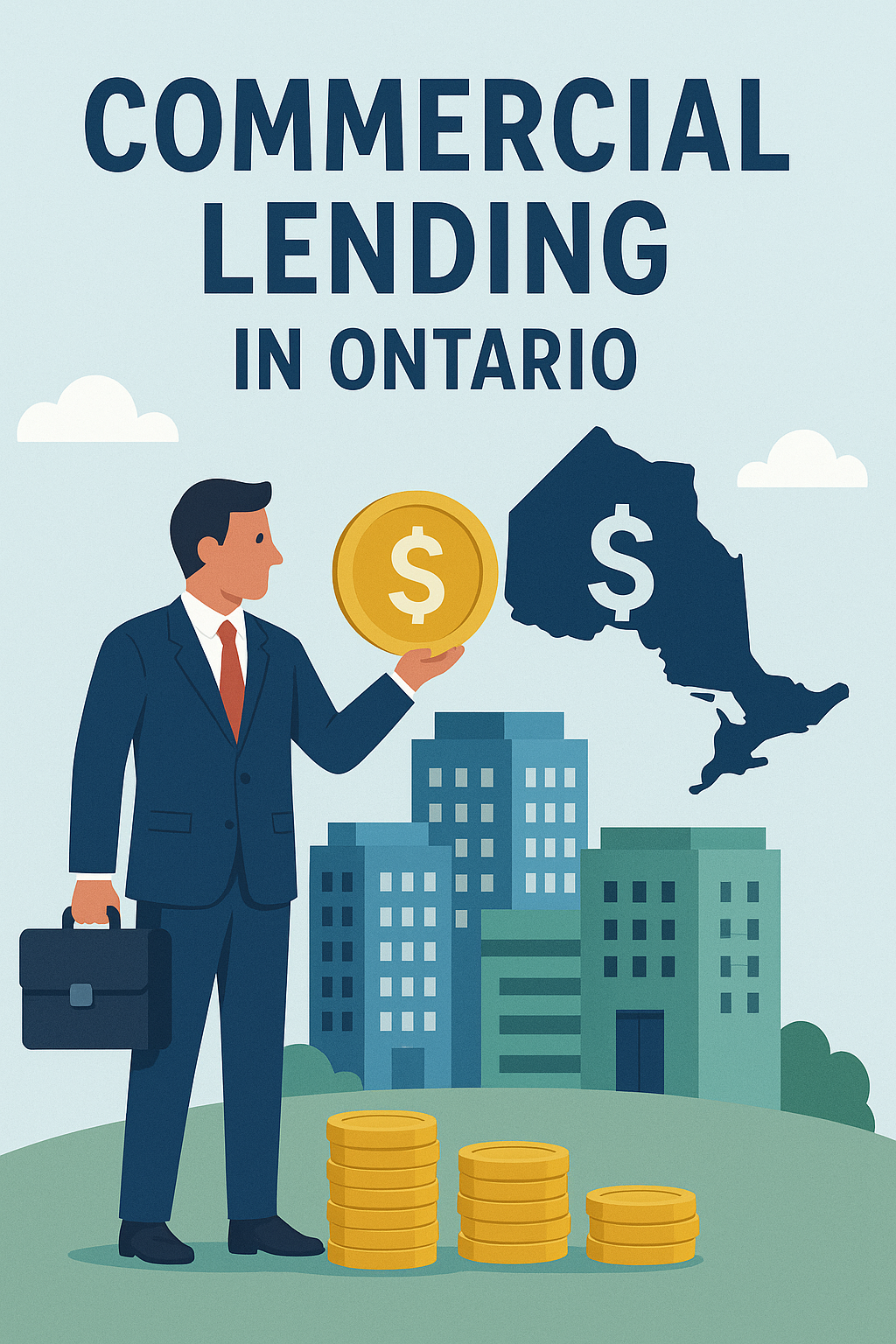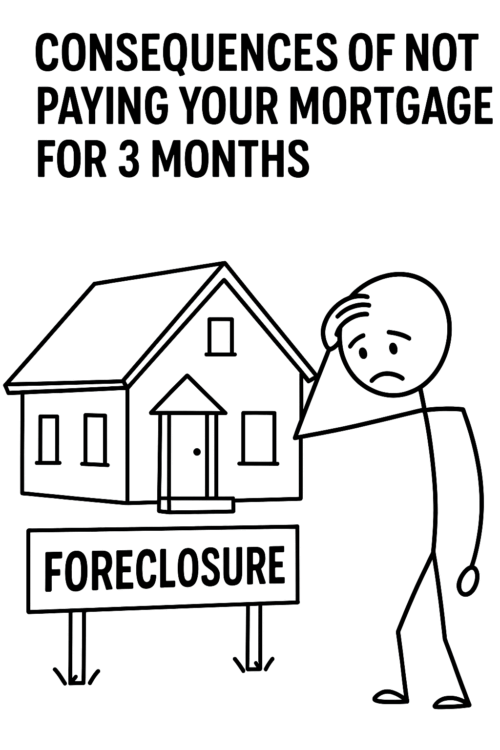Table of Contents
ToggleOntario Commercial Mortgage Trends 2025: Rates, LTVs, and Sector Shifts Every Borrower Should Know
The 2025 backdrop: cheaper money, tighter underwriting
Ontario’s commercial mortgage market is navigating a mixed but improving picture in 2025. The Bank of Canada’s policy rate sits at 2.75% after a series of cuts since mid-2024, easing debt-service pressure and lowering all-in borrowing costs versus last year. That said, lenders remain selective by asset type and sponsor strength.
For borrowers, this means pricing is better, but the bar to qualify is higher: lenders are emphasizing DSCR (often 1.20–1.35+ depending on asset risk), conservative LTVs (55–65% common for transitional assets), robust lease rollover analysis, and realistic cap-ex reserves. If you’re approaching loan maturity or planning an acquisition, getting in front of these trends is essential. Our primer on smart commercial mortgage lending in Ontario breaks down structures and documentation expectations.
Sector check-in: office, industrial, retail (and what lenders prefer)
Office (downtown Toronto): After signs of improvement in early 2025, vacancy edged back up to ~18.1% in Q2 as a few large blocks returned to market. Lenders continue to tier pricing and proceeds by building quality, tenant covenant, and lease duration (with a clear preference for newer, amenity-rich towers and medical/education/AI-tech tenancy). Expect tighter DSCR/LTV on office versus other asset classes.
Office (GTA suburbs): The picture is patchier. A record sublease transaction helped offset broader softness in Q2, showing that value-driven tenants are still active—but underwriting remains conservative on backfill risk and TI/LC budgets.
Industrial (GTA & Ontario): The market is recalibrating from pandemic-era peaks. In Q2 2025, the share of listings asking >$20 net fell sharply year-over-year as availability loosened and rent growth normalized. Even so, industrial remains lenders’ favourite collateral thanks to structural demand (e-commerce, 3PL, near-shoring) and shorter downtime. Strong covenants and modern specs still command premium financing terms.
Independent data corroborates this normalization story: national industrial availability ticked up with new deliveries in 2025, tempering rent escalation but enhancing tenant choice—factors lenders model into DSCR and rollover risk.
Retail (streetfront & grocery-anchored): Despite headlines, retail rents in key Canadian markets proved resilient through H1 2025, particularly for necessity-based and experiential formats. In Ontario, lenders differentiate sharply between well-anchored suburban nodes and challenged legacy corridors, but overall appetite is firmer than for commodity office.
Multifamily (5+ units): While this blog focuses on income-producing commercial assets broadly, note that stabilized multifamily still garners strong term debt availability—especially for energy-efficient retrofits and affordability-linked programs—though underwriting is attentive to expense inflation and turnover risk.
Ontario Commercial Mortgage Trends
Investment sentiment: recovery mode, with a quality tilt
Major broker outlooks signal improving sentiment and deal activity through 2025 as rate stability returns and bid-ask spreads narrow. The recovery is uneven: core buyers are circling industrial and necessity retail first; value-add capital is targeting select office with credible repositioning business plans. Underwriting discipline remains high, so business plan clarity (lease-up, cap-ex, ESG) is your advantage at IC.
How lenders are pricing commercial mortgages in Ontario
While each lender sets its own matrix, a typical 2025 pattern looks like this:
-
Core industrial & grocery-anchored retail: Most competitive spreads and proceeds. Fixed or floating options; 5- to 10-year terms for stabilized assets.
-
Office (non-trophy or high vacancy): Wider spreads, lower LTVs, and heavier structure (interest reserves, recourse carve-outs, rent-step underwriting).
-
Construction & bridge: Priced off prime/BA/COF with step-downs upon stabilization. Expect tighter pre-leasing or signed LOIs and detailed cost-to-complete schedules.
-
Owner-occupied commercial: Banks/credit unions with covenant focus; term/amortization reflect business cash flow strength.
If you’re refinancing to extract equity or improve cash flow, our commercial mortgage refinance tools guide outlines how to compare fixed vs. floating, amortization resets, and break-cost math.
2025 refinancing wave: maturities meet new math
Many Ontario borrowers who financed at 2020–2022 coupons are now facing refinance tests at today’s debt yields and DSCR hurdles. Even with the BoC at 2.75%, NOI growth hasn’t always kept pace with higher cap-ex and insurance costs, which can trim proceeds. Tactics we see working:
-
Pre-negotiated TI/LC reserves that align lender security with your leasing plan.
-
Partial recourse or springing recourse to unlock higher LTV.
-
Shorter initial terms with performance step-downs (e.g., margin reduction at a signed-lease milestone).
-
Bridge-to-core: using proven value-add milestones to graduate into term debt within 12–24 months.
For legacy loans that don’t pencil at term, alternative and private lenders can be a stopgap—especially on time-sensitive payoffs. Learn the trade-offs in hard money mortgage lending in Canada.
Construction financing: disciplined but available
Construction money is back—cautiously. Lenders want credible cost control, evidence of demand (pre-leases, pre-sales, or signed LOIs), and experienced GCs. Carry budgets must reflect realistic lease-up timelines given 2025’s supply deliveries, particularly in industrial and suburban office. If banks pass, specialty private construction lenders can bridge shovel-ready projects; understand fee stacks and interest-reserve mechanics before you break ground. Our guide to private lender construction mortgages in Ontario walks through eligibility and draw schedules.
Practical playbook: winning a “yes” (and better terms)
1) Arrive with lender-ready documents.
Package historical operating statements, a current rent roll, recent third-party appraisal (or broker opinion of value), a 12–24-month leasing plan, and cap-ex/ESG upgrades. If you’re earlier in the process, see obtaining a commercial mortgage in Ontario for an overview of lender expectations.
2) Lead with DSCR clarity.
Present base-case and downside DSCR, stress-tested for vacancy, rollover, and rates. Show covenants you can live with (e.g., minimum DSCR, cash-trap triggers) and how your business plan de-risks them over time.
3) Underwrite tenant quality and rollover.
Highlight credit-worthy tenants, renewal probabilities, and downtime assumptions supported by market comps (industrial absorption, office sublease comps, retail rent surveys). Use third-party market intel to anticipate lender questions.
4) Be realistic on proceeds.
Ask for flexible structures—earn-outs upon hitting leasing milestones, or margin step-downs after stabilization—rather than maxing proceeds day one. This signals alignment and often speeds approvals.
5) Consider a phased approach.
If your current debt doesn’t meet term-lender metrics today, a bridge that funds cap-ex and lease-up (with a defined take-out) can be cheaper than forcing a long-term solution prematurely.
What this means for each borrower profile
-
Stabilized industrial owners: This is your moment to term-out at competitive pricing. Lock longer if leases are staggered and expenses predictable; float selectively if you anticipate more BoC easing (but match your risk tolerance). Market normalization supports conservative, not punitive, underwriting.
-
Office repositioners: Build a credible spec-suite and amenity plan and pre-wire TI/LC funding. Consider shorter terms with performance step-downs; expect lower day-one LTV but room to earn-out as lease-up materializes. Downtown and suburban dynamics differ—use current vacancy and demand trends to frame your case.
-
Necessity retail/medical owners: Debt markets are constructive for assets with resilient footfall and strong anchors. Document sales performance and traffic where available, and show how your lease clauses (e.g., inflation indices) support NOI durability.
-
Transitional or maturing borrowers: If your refinance math is tight, start 6–12 months early and run parallel paths (bank/credit union, life co, alt lender). Our commercial refinance tools article lists the models and metrics lenders will scrutinize.
The bottom line: 2025 favours prepared sponsors
With the policy rate stable at 2.75% and cross-currents by sector, Ontario’s commercial mortgage market is open for business—but with a quality bias. Sponsors who present transparent numbers, credible leasing stories, and aligned structures are winning better spreads and proceeds. If you’re planning an acquisition, renewal, or refinance, align your package with current market data and lender priorities—and engage early to avoid maturity crunches.
Need a second opinion on structure or pricing?
We help owners and operators compare bank, credit-union, life-co, and alternative options side-by-side, model DSCR under rate scenarios, and negotiate structures that fit your plan. Start with our guide to commercial lending in Ontario and, if you’re up against a maturity or a quick close, review hard money mortgage options for short-term flexibility.
This article is for educational purposes only and not financial advice. Market data changes; confirm details with your lender, legal counsel, or advisor.
- The Critical Consequences of Not Paying Your Mortgage for 3 Months - November 21, 2025
- The Critical Differences Between a HELOC and a Home Equity Loan Every Canadian Homeowner Must Know - November 19, 2025
- How to Get a Personal Loan Secured by Home in Canada in 2025 - November 17, 2025






